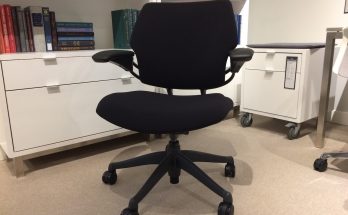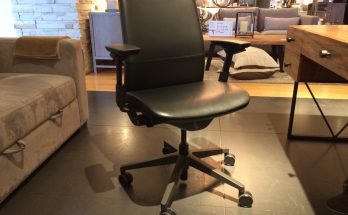I actually owned this chair for about a year and a half before giving it up. There was a lot to like about it, and I wish it could have worked out, but I kept running into problems that ultimately meant it wasn’t for me. It came down to the simplicity, which proved to be very much a mixed blessing, particularly in terms of the self-adjusting recline mechanism, which relies on user body weight…and, unfortunately, a couple design flaws which kept requiring service visits, or replacement parts.
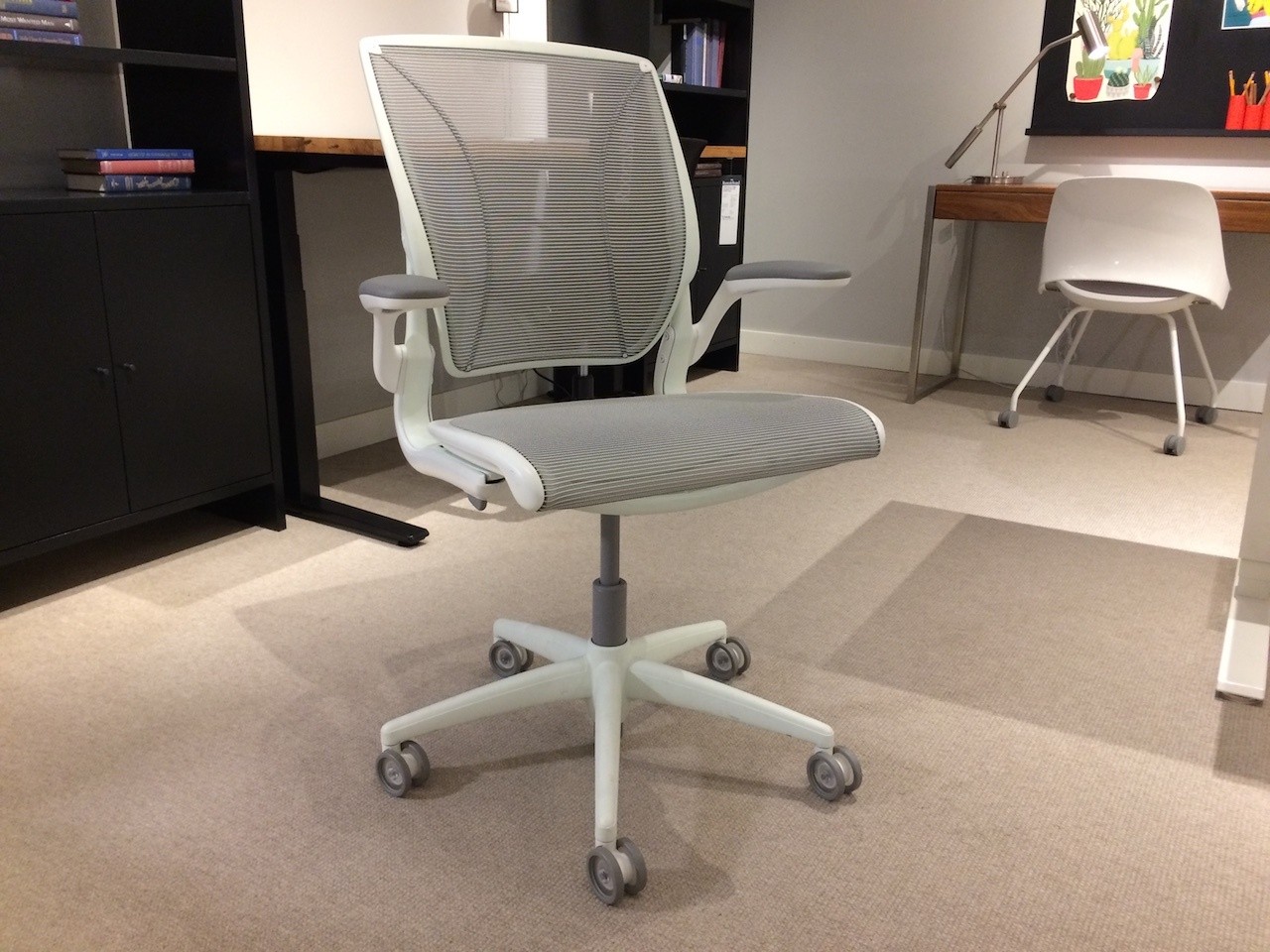
Still, the chair has a number of great features, particularly for shared seating. It accommodates the user’s body weight by adjusting the recline tension accordingly, meaning it conforms to users of many different sizes, without much need for adjustment. This is great for conference seating, shared workstations and so on, though it can’t offer the perfect Goldilocks adjustment you might prefer in a dedicated office chair suitable for all-day use. But if the not-so-adjustable design happens to work for your particular body type and work setup, it’s definitely worth a look.
The Humanscale Diffrient World Chair, reviewed
The aesthetics on the Diffrient World Chair are second to none, as are its breathability (especially in the meshy designs), its light weight, and minimal use of parts. This is meant to be as simple as an office chair can get, and I think they nailed it in every one of those categories. It’s light, airy, pleasant, and noticeably absent of pressure points, again because of the mesh.
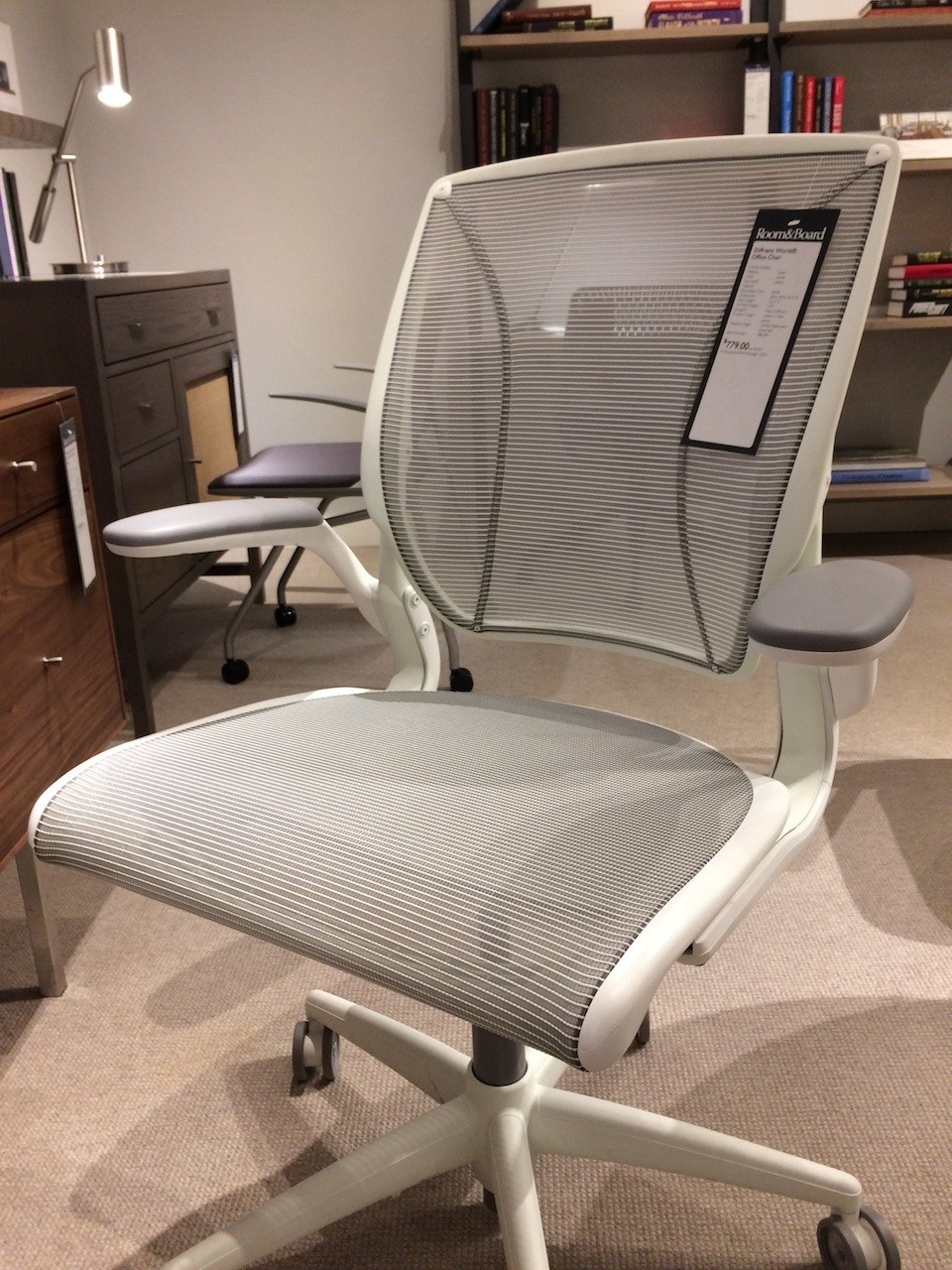
One of the best features is how it can self-adjust to a variety of user sizes, using body weight to set the recline tension, and the multi-panel mesh backrest, which conforms to a variety of back shapes without a problem. Again, you can’t get perfect adjustments, but it’ll work for a wide range of users, and it’s actually the workstation setup that’s going to be more of a concern, as we’ll see in a bit.
Recline style
This chair makes use of one of the rarest types of recline styles around; the “seat slide” mechanism, whereby the seat itself moves forward along a track as you recline. This happens in conjunction with (but after) an independently-operating backrest swivel mechanism, which doesn’t just recline backward, but simultaneously arches your back, by pressing forward into your lumbar region.
This is a two-stage recline mechanism, the first stage being just the backrest swivel, which works like this:
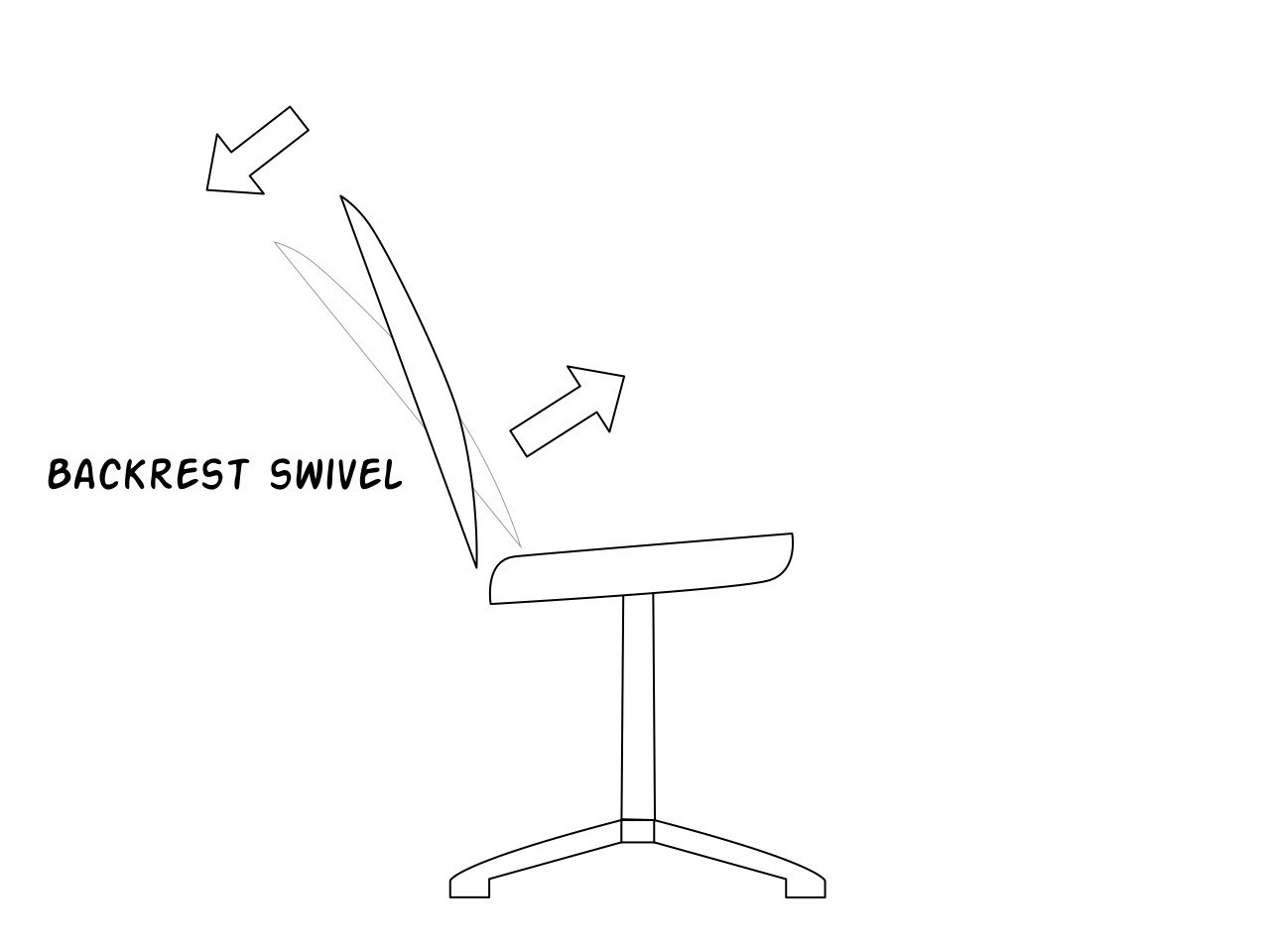
Once the backrest swivels back as far as it goes, the chair goes into stage two, where the backrest reclines even further (though not jutting any further into the lumbar region), and the seat slides forward on a slightly-angled track:
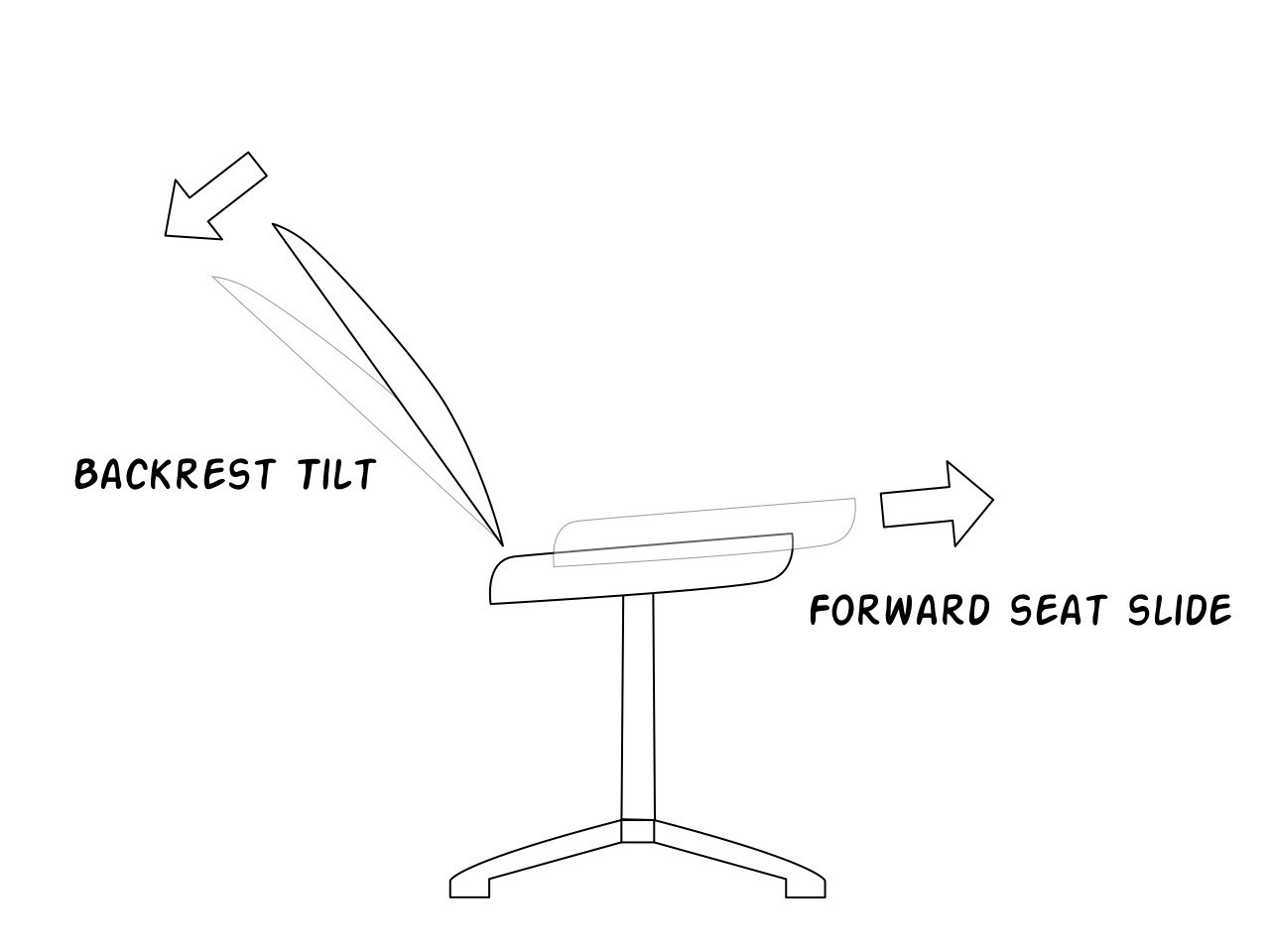
This mechanism is an excellent combination, better for me than other Humanscale chairs, which have the backrest swivel, but no seat slide. The problem with those is that as the backrest pivots, your shoulders go back, and your lumbar is pressed forward; this puts some forward pressure on your legs, almost like it’s pushing you forward out of your seat. Not so with the Diffrient World Chair. Once the backrest swivel reaches its stopping point, the seat slider begins moving forward, relieving that pressure by simply going with the flow of the forward movement your body is undergoing.
The recline goes back quite a ways, so you can really lounge out in this thing. You’ll still get plenty of lumbar support with the freely-swiveling backrest, which avoids the “lumbar gap” problem typical of simpler, cheaper alternatives.
Now that you’ve seen the diagrams, you can see the pivot point of the backrest, about two-thirds of the way down, where it’s bolted in:
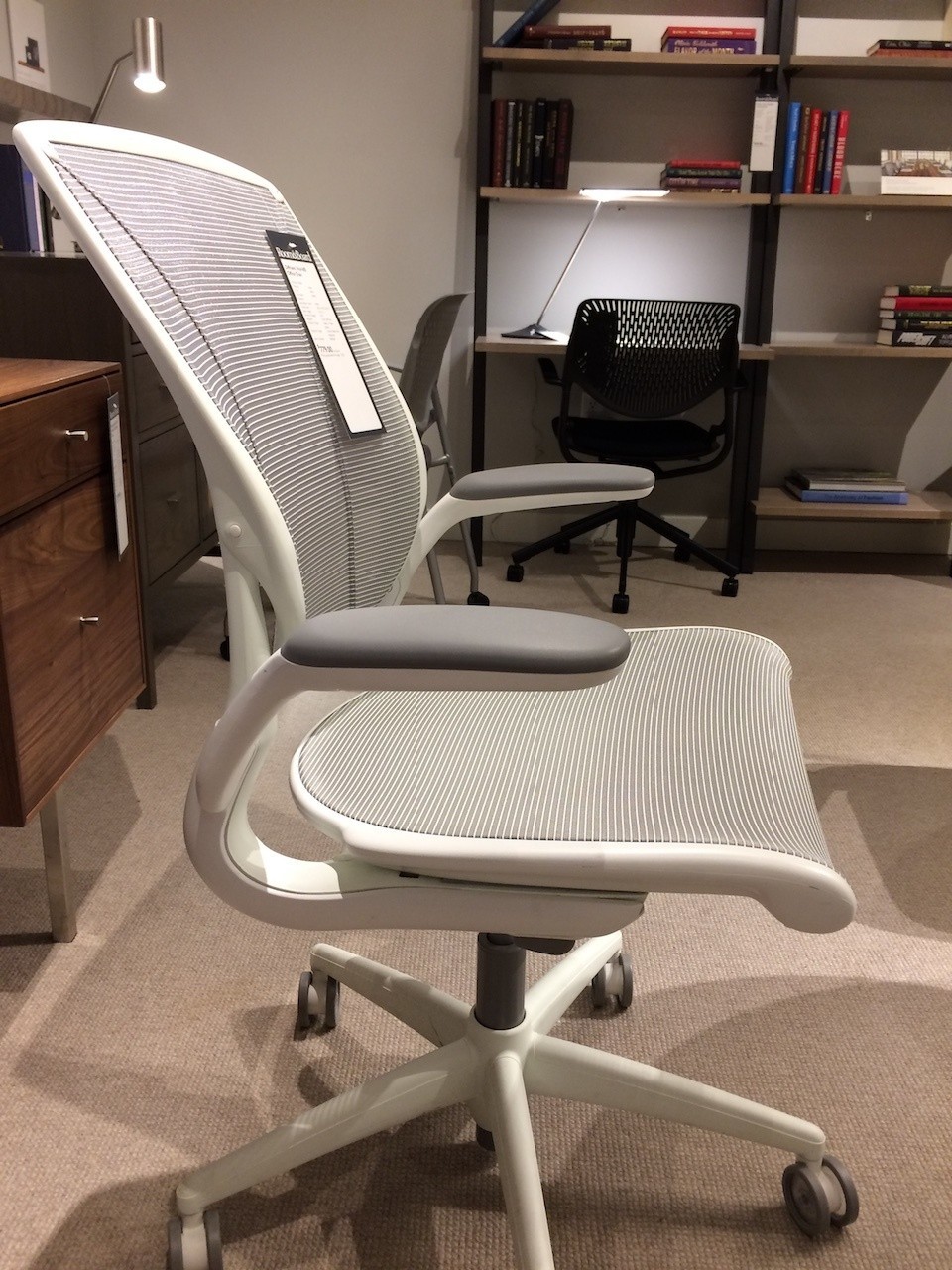
The only other high-end chair I’m aware of that works this way is the Steelcase Leap, which has that same type of seat slider, but an entirely different backrest recline mechanism. It’s a top pick of mine, so definitely give that a look if you want the seat slide, but run into other problems with the Diffrient World Chair.
Because these two mechanisms rely entirely on body weight, either by freely moving (the backrest swivel), or using a weight-sensitive automatic adjustment (the seat slide and the further backrest recline), you won’t be able to adjust either of these mechanisms yourself, and this is where I started running into some problems.
Problems with the recline mechanism
Firstly, because the backrest swivel is not weight sensitive, it’ll simply fall back to its furthest point, basically as soon as you get in the chair and lean back, so you’re pretty much always going to be somewhat reclined. You could lean forward, but that puts pressure on your muscles and back instead. It also leans you further away from the desk, forcing you to scoot the chair forward in order to reach any keyboard or mouse placed on top. This can be a little frustrating, because the further back you lean, the more likely your elbows will fall off the edge of the table, and the edge will create some uncomfortable pressure. Even when scooting the chair forward as far as possible, I would eventually reach a limit, with my stomach shoved right up against the table edge, and my elbows were still kind of falling off. If you’ve got a keyboard tray under the desk, then you won’t run into this problem, but I wouldn’t recommend using this chair with a laptop on the desk, unless you’ve got one of those curvy corner desks, which allow you to scoot in closer. It’s actually quite a comfortable position, but one that works much better if you have either of those setups.
The second recline problem is something I consider a design flaw of the chair, as even after receiving replacement parts or entirely new chairs, I kept running into the same problem: after a few months of use, the backrest would just fall backward all the way to a full recline every time I sat down. And I’m not talking about the swivel portion, but the additional recline stage. Whenever I would sit down in the chair, the backrest would gradually go all the way back, leaving me a lot further away from my desk than I would have liked, in a state of permanent recline. It was literally impossible to sit upright.
Humanscale told me this problem is permanently fixable, but when I saw the inside of the chair, I had a hard time believing it. The seat slides along four rubbery spheres, and the pressure from sitting down in the chair is what sets the tension, by squishing those spheres, thus increasing the friction. But wouldn’t those rubbery spheres just wear down over time, and need constant replacement?
I didn’t get a clear answer here, which was a little frustrating. On the other hand, and for whatever reason I don’t understand, I only ran into this trouble with the black chairs. The white ones I’ve tried simply don’t have this problem, and the chair is very much a “sticky-back” recline style, in that you push against the backrest until you get the angle you want, and it’ll stay there, until you put some more pressure on it to recline even more, or sit up to get it back up straight. This is in contrast to a “rocker” style, which goes smoothly back and forth with little or no resistance. Sticky-back recline mechanisms are better for staying in place, which is helpful for writing, typing, or other fine detail work where you’d want more stability.
Okay, so I know that was a lot of information up front, but it’s the recline mechanism that’s really important here, so let’s move onto the rest.
Adjustments
This chair has only two adjustments; seat height, and seat depth. I found myself preferring to put the seat as far forward as possible, as I’m pretty tall and lanky, but also because the front edge of the seat is a pressure-less “waterfall” edge. This is good, but there’s very little support there, so I preferred extending the seat forward to provide a larger sitting surface.
You can see the button on the bottom along the right side, in grey. That’s for seat height, while seat depth is on the opposite side.
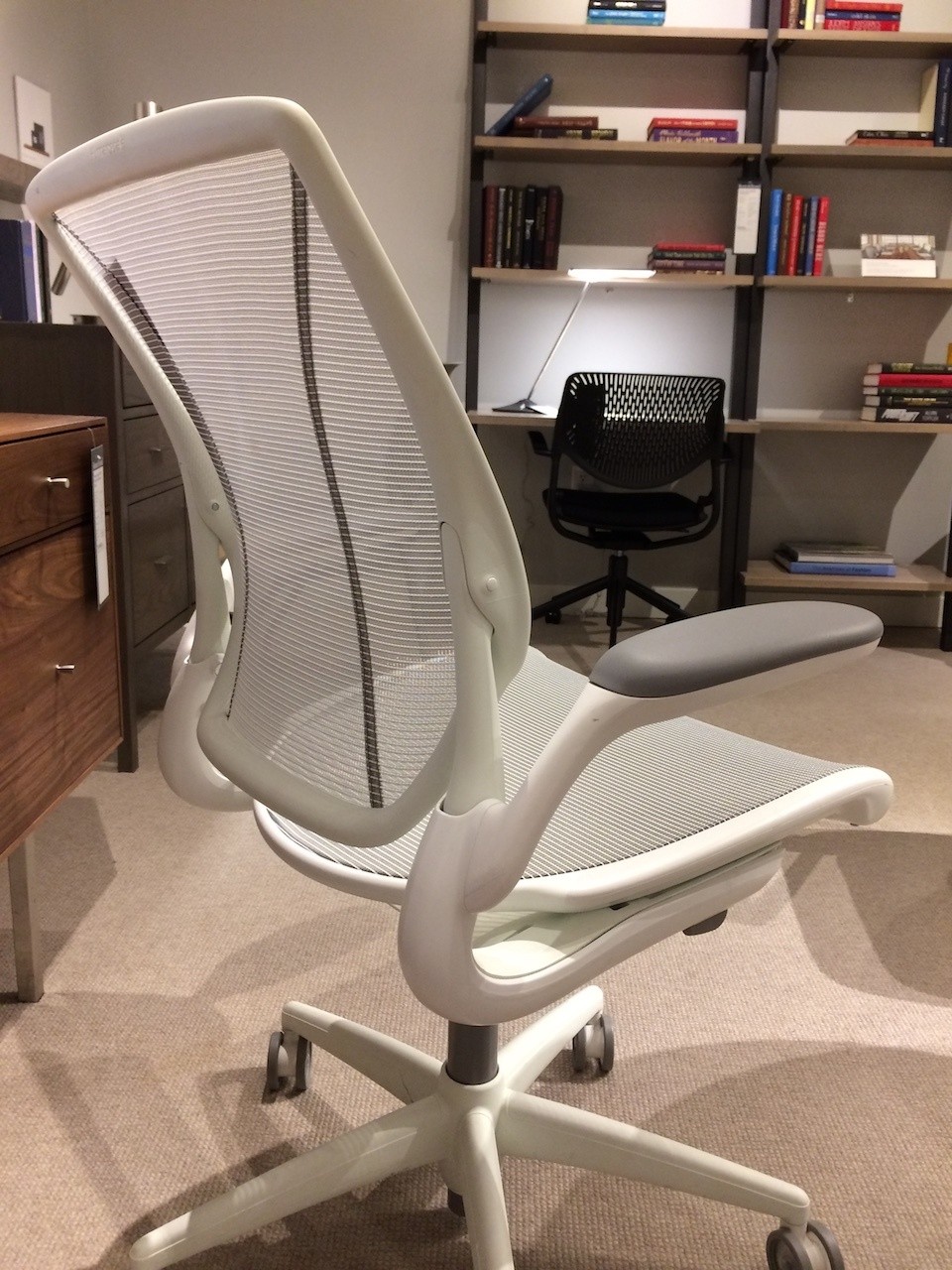
What I’ll say here is that I wish the seat itself were just a bit larger; since it helps to push the seat as far forward as possible, that means your hips will get a little too close to the plastic bar in back, where it curves in a U-shape a little too close to the body (as seen in the photo above). I’d feel some tailbone pressure after sitting in this chair for a while, largely because of how short the seat is from front to back, when you take into consideration how the front feels shorter because of the non-supported edge. Making it just a bit wider would help as well, especially at the bend in the U-shape in the back. But I’m 5’10”, so shorter and slimmer users, especially those who have shorter legs and put the seat further back, won’t run into this issue as much.
Again, because of the inability to adjust the backrest swivel portion of the recline, you’re going to lean back, whether you like it or not. There’s no mechanism to keep the backrest fully upright, so if you like sitting up straight, this isn’t for you. It’s best if you like reclining continuously, and typing at a keyboard under the desk, or if you have a curvy desk which allows elbows on the table more easily.
Armrests
I can’t say the arms are spectacular here. The standard armrest has no adjustments at all, and although you can upgrade to adjustable armrests, they will only adjust along a diagonal track. This moves them up, and forward just a bit. It’s okay, but mostly just for people sitting back, leaning an arm on either armrest like a king, and that’s about it. You won’t be able to move them closer to your body, or swivel them to an angle, which is a common feature of many competitors in this price range. This makes it difficult to use the armrests for any kind of typing, for example. A keyboard tray under the desk will help, as you’ll get your elbow on the armrest, and your wrist on the keyboard tray, but a swivel mechanism would allow more contact for greater comfort.
I will say that I like how the armrests are fixed into the base of the chair, instead of the backrest or seat; this means the armrests won’t move around, no matter how you recline. Chairs with moving armrests tend to follow the tilt angle of the seat or backrest, depending on which component they’re connected to, meaning those armrests would rise upward as you recline, and hit a desk or a keyboard tray from underneath, but this simply isn’t a problem here.

Since the recline mechanism isn’t just a recline (thanks to the backrest swivel stage), you don’t fall back, away from the armrests, nearly as much as you would in other chairs that have just a recline mechanism, but non-moving armrests. The Diffrient Chair does a decent job keeping your pretty close to the armrests, except when you’re really lounging far back.
By the way, the adjustable armrests will adjust downward from what you see in the photo; those fixed armrests are essentially at the highest point that the adjustable ones can get to. They’re at a good height to go under a desk when you scoot forward.
One last problem, although one I didn’t run into, was how the armrests can break. When users stand up out of the chair, many of them have a tendency to push down against the armrests to stand up, and snapped-off arms are a common complaint for this reason, given how they’re connected in the back, rather than directly beneath the armrests. Just be careful with that, and you’ll be fine.
Lumbar support
The lumbar support here is second to none, in my opinion, especially if you prefer aggressive support. Though not adjustable, the swiveling backrest falls backward at the shoulders, while pushing forward into the lower back, giving you really great lumbar support throughout the day. Since the backrest is made entirely of mesh, there’s also no pressure at all, and breathability is great, too. Even at its furthest recline point (and I mean recline, not just swivel), it doesn’t run into the “lumbar gap” problem that cheaper chairs sometimes do, providing support no matter how far back you recline.
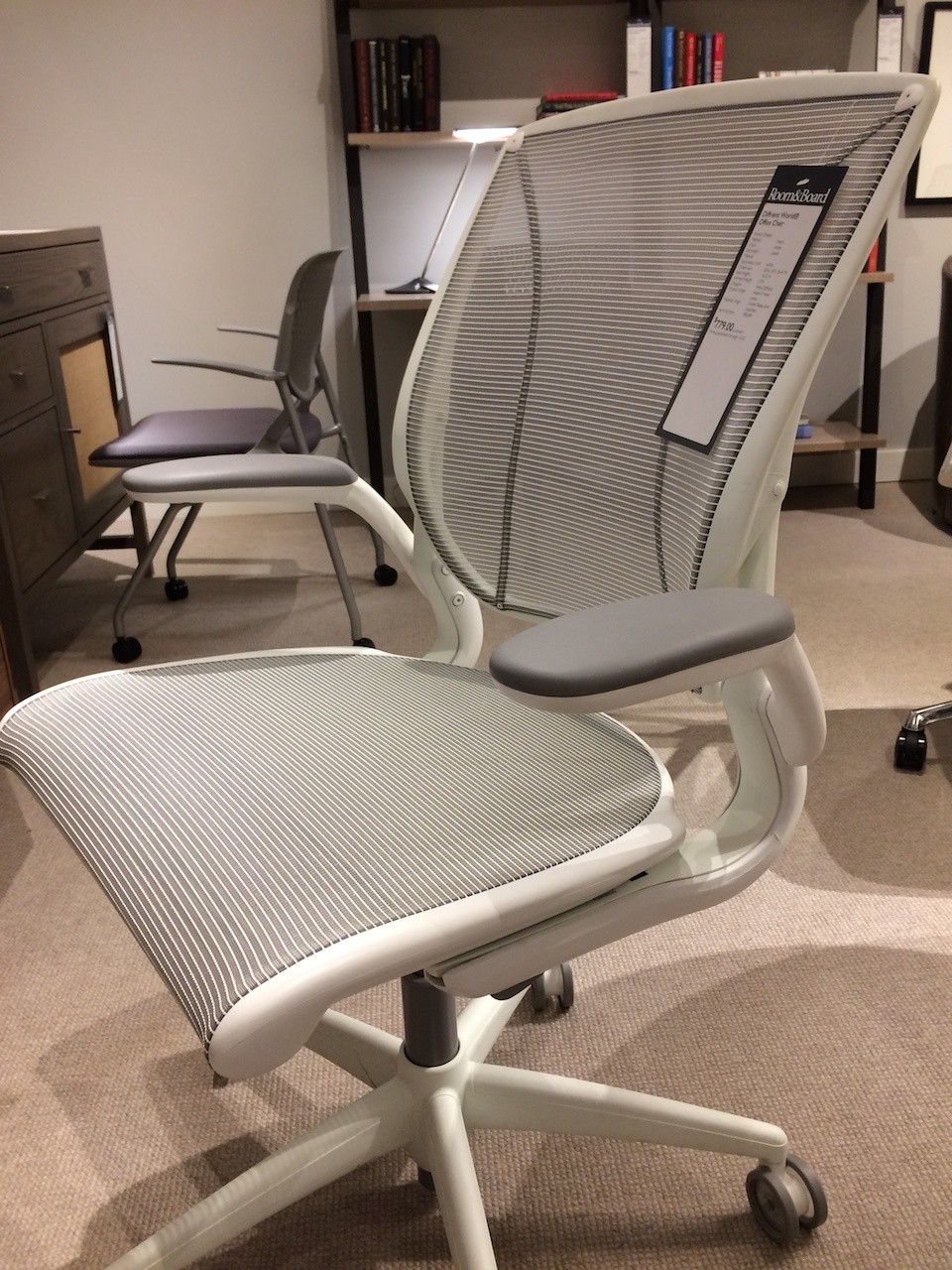
Again, it’s aggressive support, pushing forward quite a bit into the lower back. The swivel mechanism will rotate to accommodate whatever angle is appropriate, but since it’s freely moving, getting it to stop moving requires swiveling to the furthest point back, when the lumbar is at its furthest forward, which is why it’ll work better for people who like it in that position, with aggressive lumbar support.
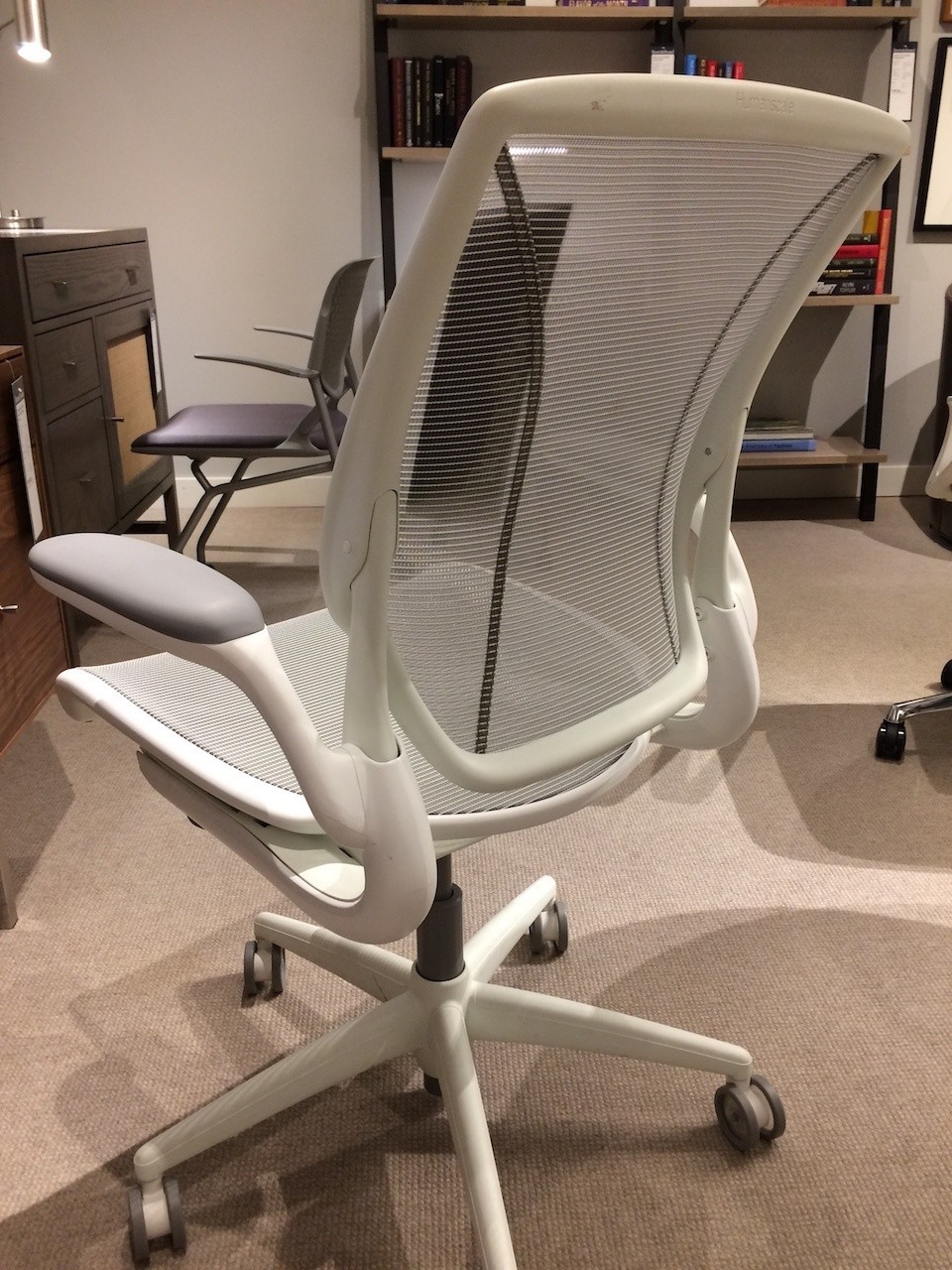
You can see how it curves away towards the bottom, avoiding any lower body contact with the plastic frame surrounding the mesh panels. There’s simply no pressure point to be found, whether at the lower back, or anywhere else. It’s definitely one of the highlights, offering perfect conformity.
Waterfall edge
As mentioned, this chair has the equivalent of a waterfall edge, to reduce the pressure against the underside of your legs, near the knees. It’s not very supportive, which is why I preferred to adjust the seat as far forward as it would go, but the pressure is practically nonexistent, so there isn’t much reason to fear the problem of blood flow getting cut off because of a stiff seat edge.
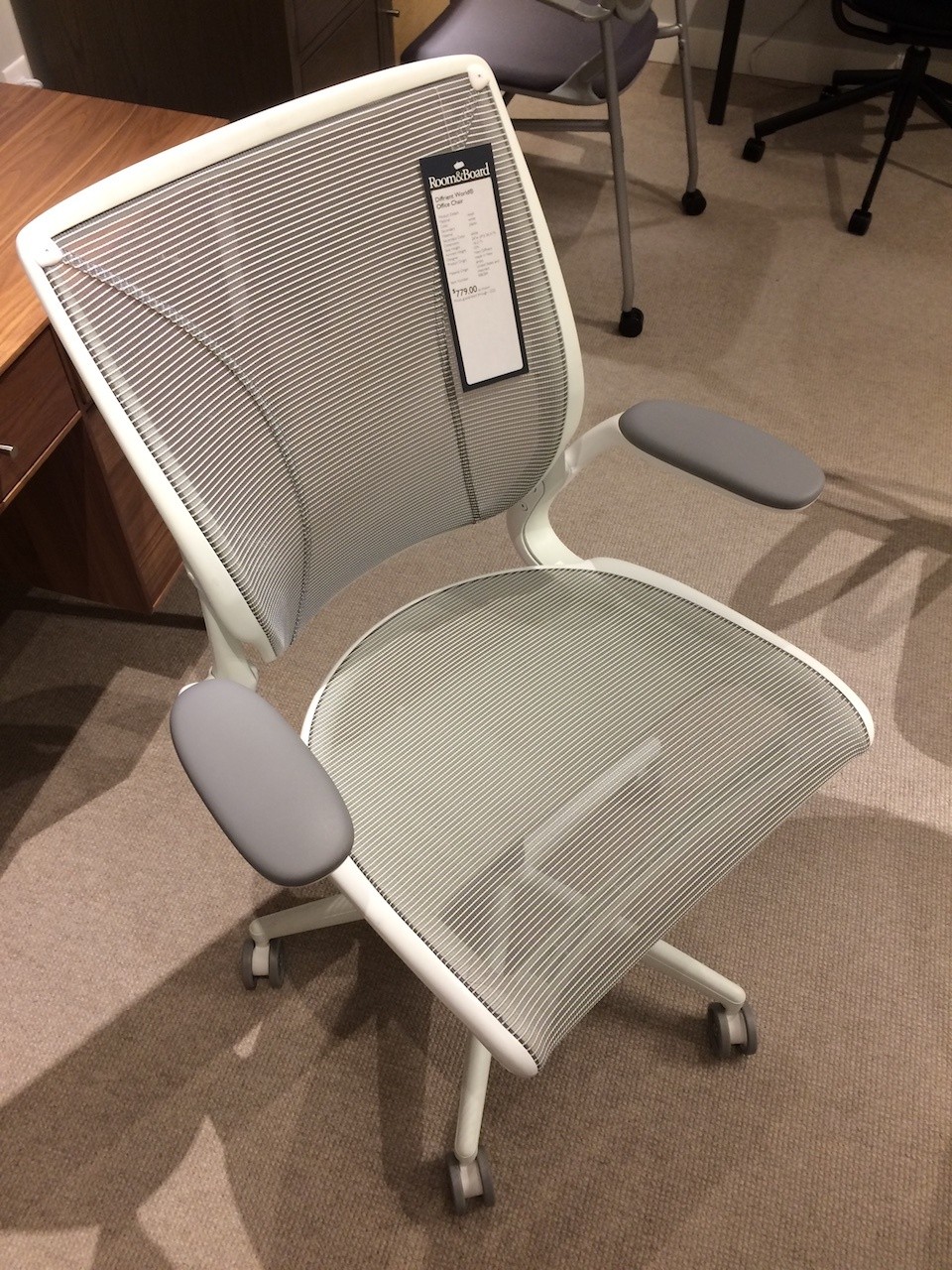
You can kind of see the bar that goes from one side to the other, positioned down and back, where you won’t feel it at all. Very clever.
By the way, I would avoid the cushioned seat options of this chair. I tried one of those, but it’s not really a “cushion.” It’s just a thin layer of foam over the mesh, meaning it’s not really going to feel more supportive. I had originally expected it would make the seat feel a bit more stable, rather than sagging down in the middle, but it didn’t change this at all. It just used a higher-friction fabric, making it more difficult to scoot around in the chair for minor adjustments. Stick with the mesh.
Forward tilt
The chair has no forward tilt mechanism, and the seat itself is angled just a bit to give you a little recline as you’re sitting, rather than being perfectly flat. The good news is that because the mesh is malleable, leaning forward is fairly easy, as the seat will adapt to the minor changes without much trouble––and again, with the no-pressure front edge, you won’t feel discomfort from a stiff edge.
Last, the quality control problem
Well…the plastic breaks. In every replacement version of the chair I received, it would crack in exactly the same place, in exactly the same shape, every time. Four times in a row, within a week or so of using the chair. And I’m only 150 pounds. If I’m breaking the chair, then the chair is wrong. I kept telling Humanscale it was happening over and over, but it was the first they’d heard about it. I think they’re just not noticing.
It happened in back, on the vertical posts that hold up the backrest:
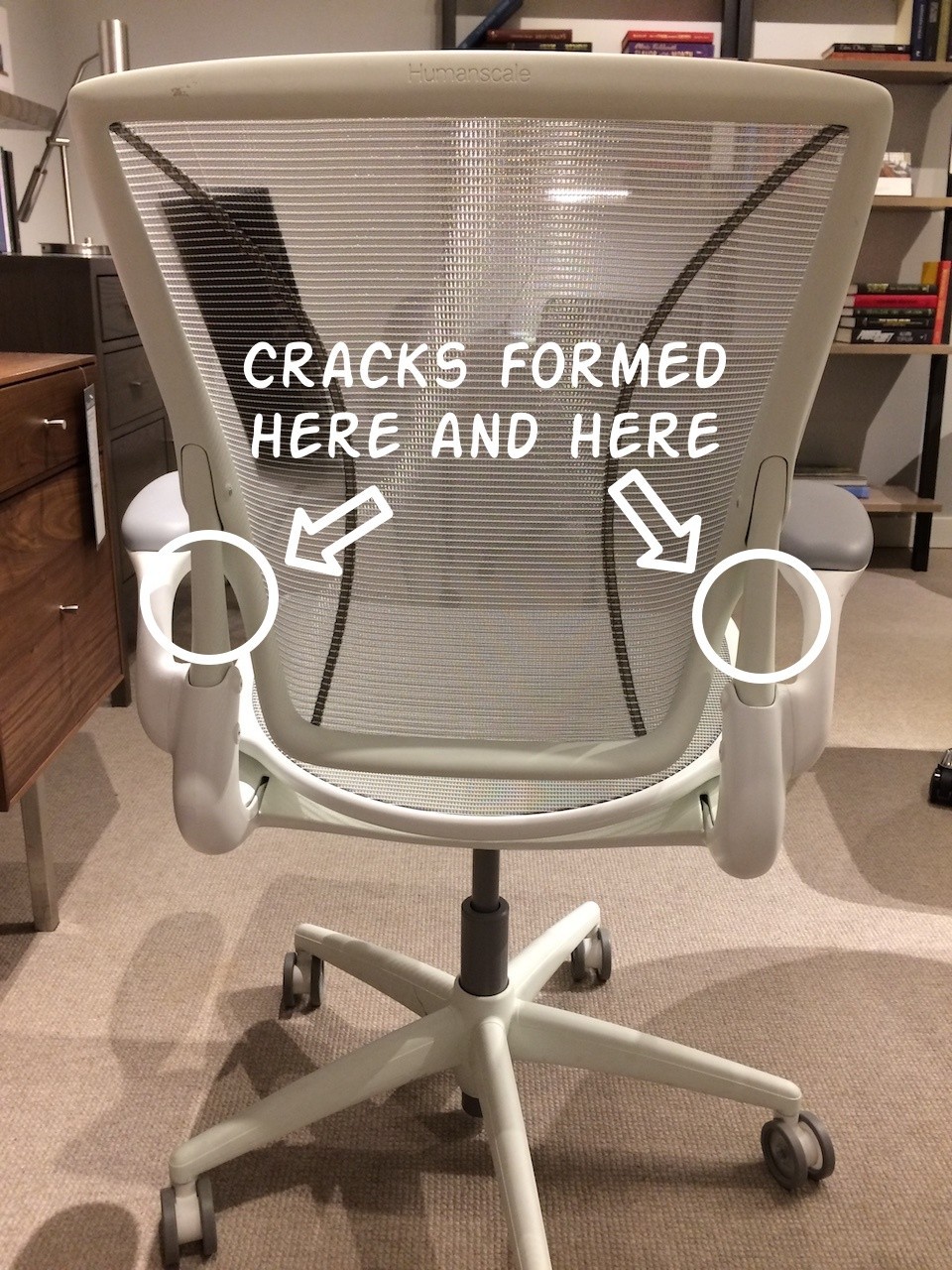
Oddly enough, the white chairs simply didn’t have this problem. Even in retail stores, the black ones were broken, and the white ones were not. I expect the plastic simply has a different composition, but that’s as much as I can say about that, as I didn’t own the white version. But I did own four black ones, all of which broke identically, along with the local retailer’s black model, which also had the identical problem. Humanscale has a warranty, but I’d really like to see them fix the production process to avoid this in the first place.
Conclusion on the Humanscale Diffrient World Chair
Though it sounds like I’m pretty down on this chair, I’m really not. It does quite a few things extremely well, particularly the recline mechanism, combining that swiveling backrest with the seat slide feature, which allows for great lumbar support, while avoiding that forward-pressing problem typical of chairs that use a backrest swivel, but don’t have a seat slide. The all-mesh design means it has great breathability, and conforms to the body extremely well. The “sticky-back” design allows for set-and-forget backrest angle adjustment, so you’ll stay in the same place until you push against the chair to readjust the angle (although that’s not the case for the backrest swivel, as that’s an independent, and freely-moving mechanism). The self-adjusting tilt recline mechanism is great for shared use, and I absolutely love the aesthetic and functional simplicity.
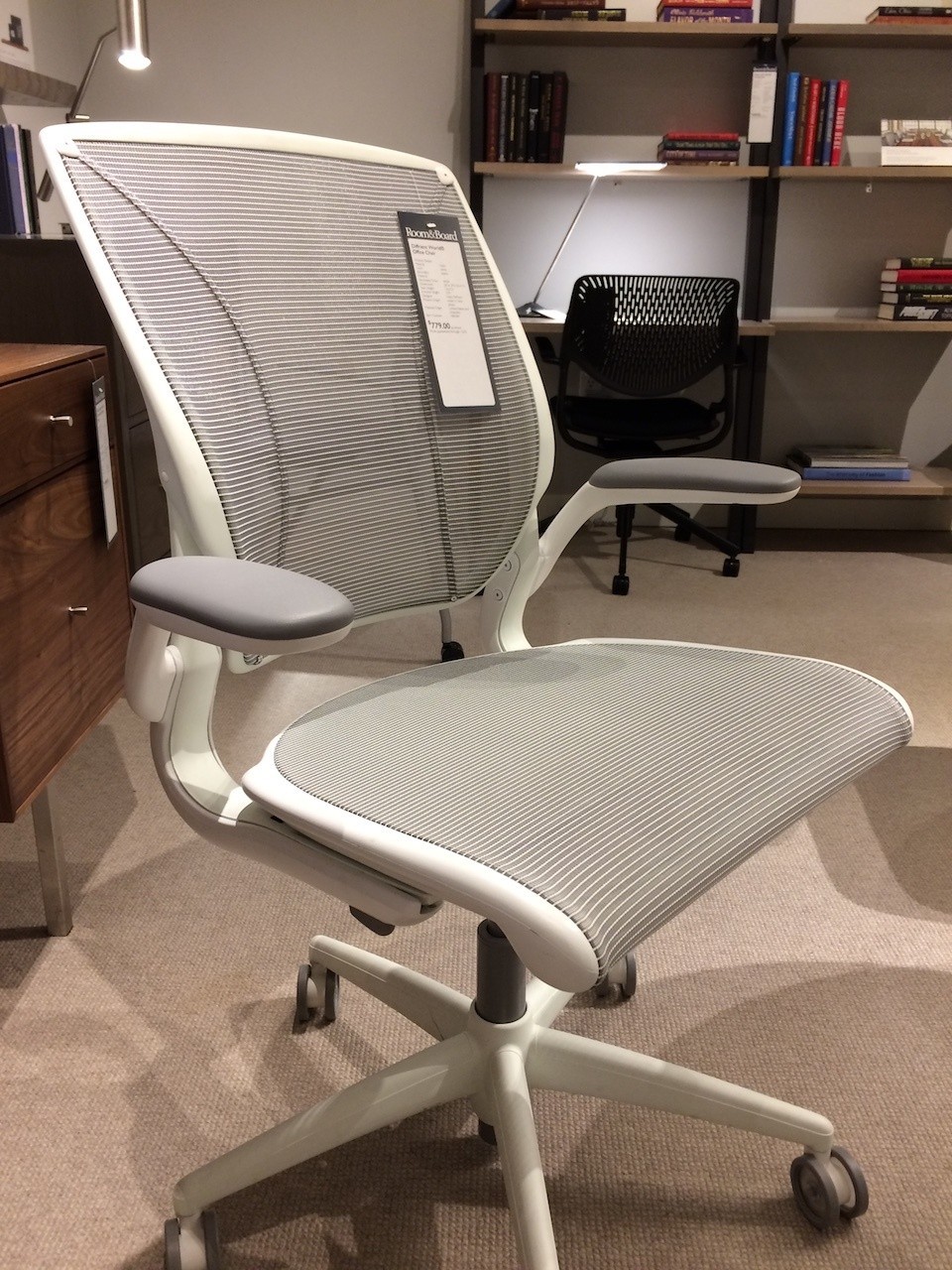
That said, the troubles I kept running into were too much of a challenge to accept. The self-adjusting mechanism eventually wore out (in a few months, consistently, with each replacement) and although Humanscale mentioned they can fix it, I just didn’t expect this to be a permanent solution. The recurring issue of broken parts was also quite frustrating, and although I could have lived with it if it was just a crack (the Great Pyramid of Giza has a crack that’s been there for thousands of years, by the way), I couldn’t deal with the constant falling backward of the worn-out recline mechanism. I also would have preferred using this with a keyboard tray, as the always-reclined backrest swivel meant I couldn’t get my elbows fully up on the desk to where I wanted them to be for laptop use. If you’ve got a keyboard tray, or a curvy desk, this’ll help out a lot.
So it can definitely work for plenty of users out there; probably users under 5’10”, who won’t run into the seat depth problem I did, and users who like having a keyboard tray for typing, and prefer the always-just-a-bit-reclined angle that takes shape pretty much the instant you sit down, thanks to the backrest swivel. It’s not a super-adjustable, Goldilocks-perfect type of chair, but for users of that specific type, as well as shared seating, I like it a lot. Just give Humanscale a call if you run into cracked parts, and faulty recline tension. The warranty will take care of it, but again, they should solve those issues in the first place.
If you decide it’s for you, you can pick it up on Amazon. You can find custom color options and other variants at stores like The Human Solution, and retail stores like Room and Board, where I took the above photos.
